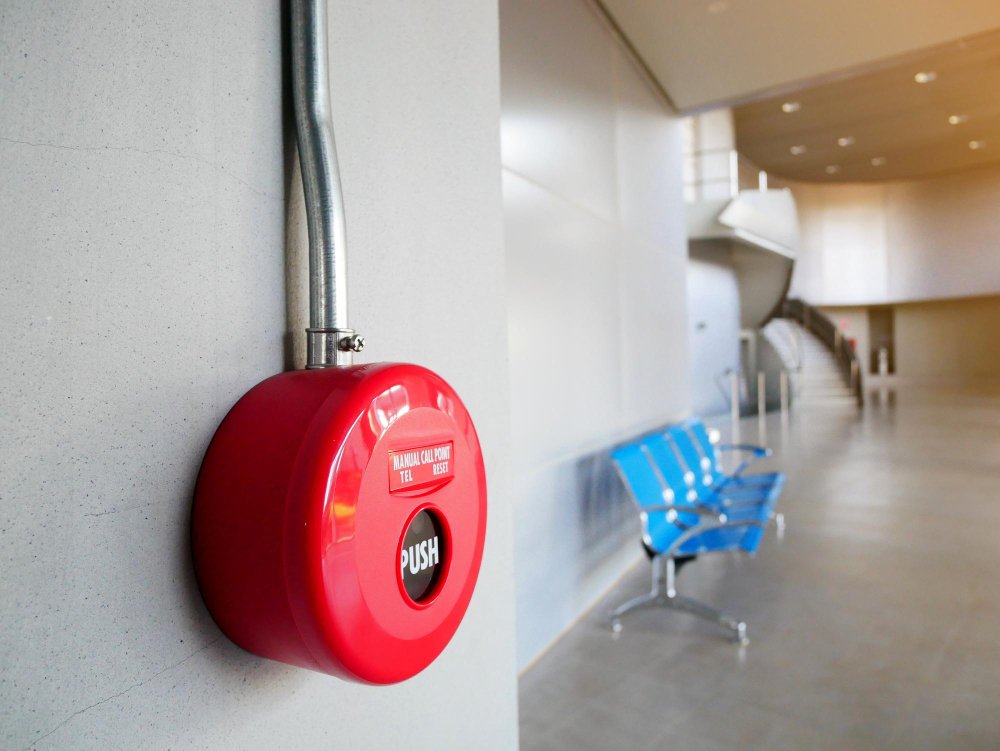Fire detection and alarm systems are essential for keeping buildings and people safe. These systems are designed to detect smoke, heat, or flames and provide timely alerts to minimize the risk of injury or property damage. With advancements in technology, fire detection systems have become more effective and reliable. This article explores current trends in fire safety technology, common types of fire detection systems, and best practices for maintenance to ensure optimal performance.
Understanding Fire Detection Systems
Types of Fire Detection Systems
Ionization Detectors
Ionization detectors react quickly to rapidly evolving fires that emit tiny particles. To ionize the air in the sensor chamber, they employ a little amount of radioactive material. When smoke enters the chamber, it interferes with the ionization process and causes an alarm. Application areas of these detectors are locations where rapid response to open flames is very important.
Photoelectric Detectors
Photoelectric detectors work better in the detection of smoldering fires, which create larger particles. They have a light source and a sensor; once smoke comes into the chamber, it scatters the light beam so that the alarm goes off. These detectors are suitable for bedrooms or living rooms where smoke can easily build up.
Heat Detectors
Heat detectors react to temperature changes instead of smoke. They are particularly useful in environments where dust or steam might trigger false alarms. Heat detectors can be either fixed temperature devices that activate at a predetermined temperature or rate-of-rise devices that respond to rapid increases in temperature.
Combined Detectors
Many contemporary fire detection systems integrate multiple technologies into a single unit. These hybrid detectors utilize both ionization and photoelectric technologies, providing comprehensive coverage against various types of fires.
Role of Fire Alarm Systems
Fire alarm systems are the building blocks of fire safety in facilities. The primary function of a fire alarm system is to notify both occupants and emergency personnel of potential fire threats. A typical fire alarm system includes multiple components:
Detectors
These devices sense smoke, heat, or flames and initiate the alarm.
Control Panel
The central hub processes signals from detectors and activates alarms.
Notification Appliances
Sirens, bells, or strobe lights will alert the occupants to evacuate.
Knowing how these components work together is the key to good fire safety management.
Best Practices for Maintaining Fire Detection and Alarm Systems
Regular Inspections and Testing
Routine inspections are important to make sure fire detection and alarm systems work properly:
Routine Checks
Building owners should establish a regular inspection schedule—typically monthly for visual checks and quarterly for functional tests. This ensures that any potential issues are identified before they lead to system failures.
Testing Procedures
During inspections, all components should be tested according to manufacturer guidelines. This includes checking batteries, cleaning sensors, and ensuring that notification appliances are functioning correctly.
Keeping Software Updated
As technology advances, keeping software updated is crucial:
Firmware Updates
Most new fire alarm systems have software that needs regular updates. These updates can enhance system efficiency by improving detection algorithms or fixing vulnerabilities.
Impact on Performance
Regularly updating software ensures that the system operates at peak performance levels, reducing the likelihood of false alarms or missed detections.
Training and Education for Staff
Educating staff on fire safety protocols is vital:
Importance of Training
Regular training sessions help ensure that all personnel understand how to operate fire detection systems effectively. This includes knowing how to respond during an alarm activation and understanding evacuation procedures.
Resource Availability
Building managers should provide access to training materials and programs that keep staff informed about the latest fire safety practices and technologies.
Remote Monitoring and Cloud-Based Solutions
Advantages of Remote Monitoring
Remote monitoring capabilities have changed how fire safety is managed:
Real-Time Oversight
Remote monitoring allows building managers to oversee their fire alarm systems from anywhere. This capability enables immediate alerts regarding system status and performance issues.
Prompt Response Mechanisms
With remote access, any detected anomalies can be addressed quickly—whether it’s dispatching maintenance personnel or notifying emergency services during an incident.
Implementing Cloud-Based Solutions
Cloud technology offers additional benefits for managing fire safety:
Features of Cloud Technology
Cloud-based solutions provide centralized control over multiple sites or buildings. This allows for streamlined management processes, including data analytics on system performance over time.
Security Considerations
While cloud solutions offer many advantages, they also pose security challenges. It’s essential to implement robust cybersecurity measures to protect sensitive data related to building safety.
Key Takeaway
Caring for common fire detection and alarm systems is now more important because of new technology advancements. By understanding different types of detection systems, keeping up with current trends, and following the best maintenance practices, building owners can significantly enhance safety measures within their facilities. Regular inspections, timely software updates, staff training, and leveraging remote monitoring capabilities will ensure these critical systems operate effectively—ultimately protecting lives and property from the devastating effects of fire.



